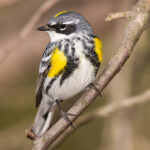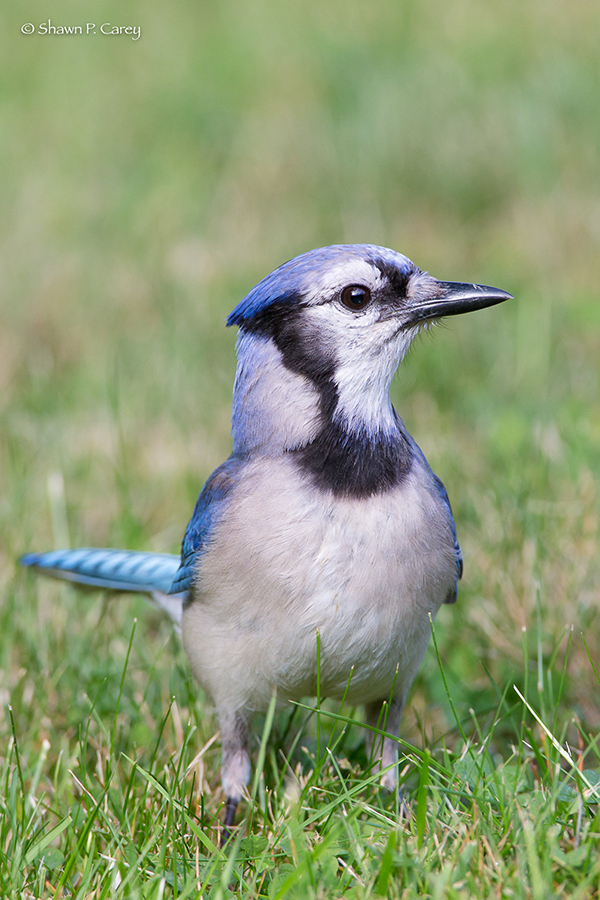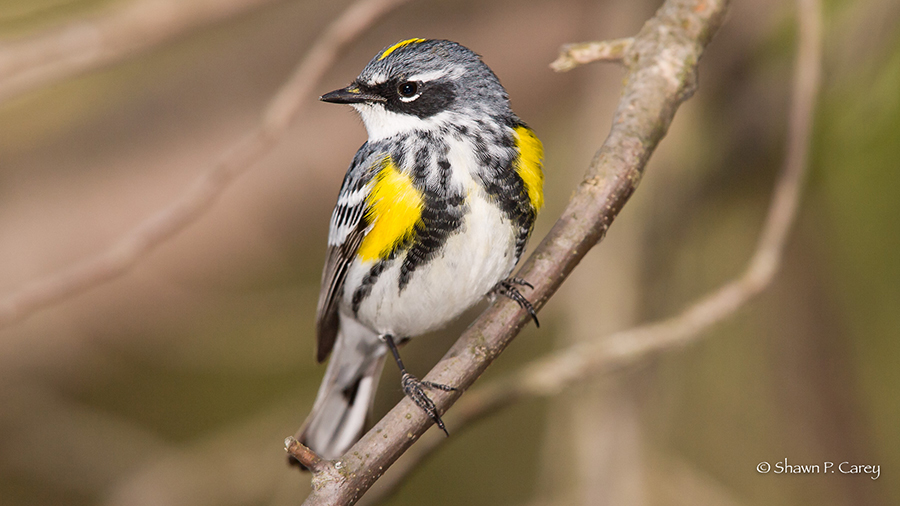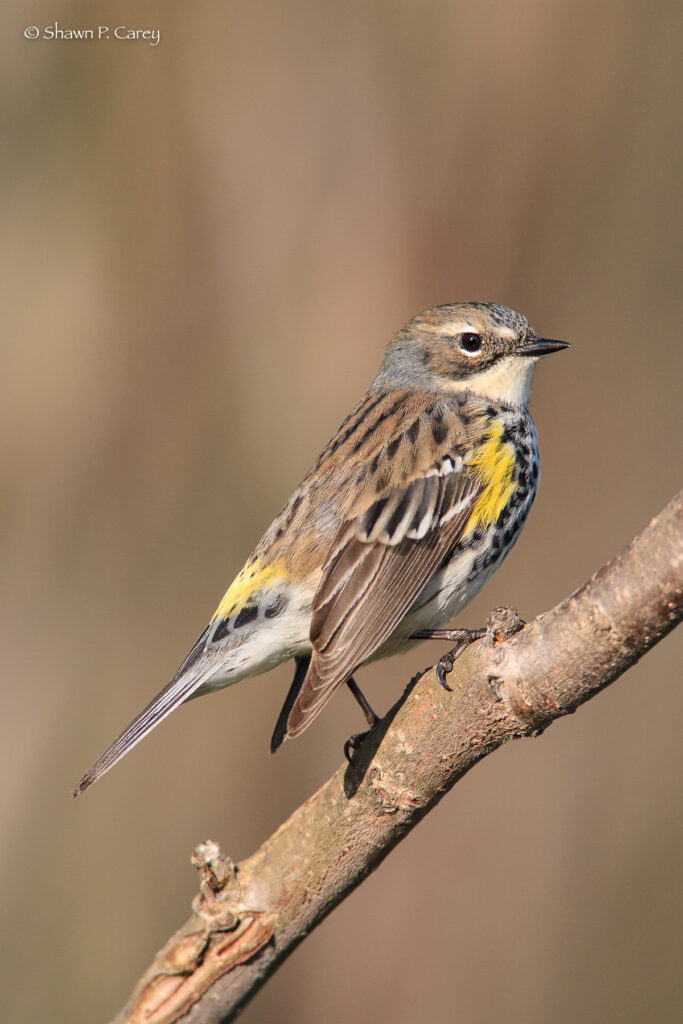
An Informal Cornucopia of Nature’s Natterers
By Fred Bouchard
Now we’ve shed our muffled-up, gray brumal months and can wake up to the myriad bright voices of spring that surround us.
Some are tiny, and too intimate: the house fly zizzes angrily to escape your bedroom; a drone mosquito whines by your ears. Some are shrill and chattery: from a tree fork a gray squirrel scolds in a chitter; a chipmunk goes tuk! tuk! as she scoots underfoot. The Eastern cottontails burrowing under your yard—normally silent—may emit petulant squeals if alarmed or attacked. A red fox, skunk, or raccoon can give you nightmares with a midnight shriek. Many little voices—chirrupy crickets, clicking beetles, buzzy bees—tell us “Take heart: life renews!”
Even mute critters make incidental noises, say, when a line of Eastern Painted Tortoises and Red-eared Sliders plop! off a Blair Pond log. In late March, the blind Eastern Red Bat I watched skitter across Halcyon Pond at Mount Auburn Cemetery used echolocation to home in on moths and water bugs, but that sonar works far above human hearing range. Emerging butterflies and dragonflies pay mute, if rainbowed, eloquent tribute to vernal bounty. First-out lepidoptera are sepia and violet Mourning Cloaks and black-spotted Cabbage Whites; early dragonflies include the tan-and-black Ringed Boghunter and emerald green Eastern Pondhawk. Also water-based, local amphibians chime in choral conclaves: Wood Frogs’ high ticking rattles, bullfrogs’ competitive brrups! and ear-splitting screech-fests by spring peepers.
Resident nonmigratory birds that kept fairly quiet all winter exercise their syrinxes to celebrate warming weather and attract mates. The Northern Cardinal that got by at the feeder with a chip-chip since November has re-found his whoop-de-doo song and broadcasts it from a telephone wire, to be shortly echoed by a competing male half a block away. The august red cardinal is the Celine Dion of avian songsters: syrupy, exuberant, indefatigable. Out of the limelight, Black-capped Chickadees and Tufted Titmice dee-dee and twit-twit inquisitively from lilac, yew, and verbena.
American Robins tut-tut and cock their heads to hear the earthworms they steadfastly yank from your lawn—in a sadly rare avian/sod interaction. Early risers and inveterate singers, robins haunt the predawn hours with endlessly repeated riffs. Mourning Doves likewise coo-OOO-oo by 5 AM—to my taste, ad nauseam. White-breasted Nuthatches nod their knowing peppy henh-henh as they inch down tree trunks. Northern Mockingbirds, erstwhile sentinels guarding their winterberry bushes, now hit high perches and notes, practicing their astonishing repertory of all-birds’ songs.
Intelligent, social corvids—Blue Jays and American Crows—nyah-nyah and wrangle and sweep overhead in outlaw bands, out-shouting boisterous leaf blowers (just kidding). April arrivals, the migratory Icterids, also weigh in as noisy and collegial, flocking en route: Red-winged and Rusty Blackbirds, Common Grackles, Eastern Cowbirds. All sport dark, glossy plumage and a predilection for raspy, shrill calls. Flashy family members are the Orioles, males black with orange (Baltimore) or chestnut (Orchard) and females that tend to yellow. Both males sing gorgeous, elaborate melodies.
Unobtrusive by day, American Woodcocks commence their elaborate mating “field exercises” in late March with post-dusk sky-dances and death-defying dives. Not much to look at with comically long bills, asymmetrical eyes, dumpy shape, and shambling shuffle, Woodies nonetheless impress their ladies. Repair to Rock Meadow at last twilight in spring to catch the show.
Here’s my E-bird entry for 3/31: Late dusk. Warmish, 60F. Gray dissipating. Fingernail new moon, ‘tiny’ Jupiter riding far above. Walk 1-2 football fields to low rise between Victory Gardens and phragmites stand by the boardwalk. Woodcock peent here and there by 7:30; sporadic male kamikazes “timber-doodle” by 7:45, but no visuals picked up. Leave at 8, still not fully dark. Spoiler alert: you don’t need to see ‘em.
But the cream of spring song-fests is reserved for those early bird(er)s who haunt Mass Audubon’s Habitat, Mount Auburn Cemetery, Mission Hill’s McLaughlin Park, Brookline’s Hall’s Pond and other famed sylvan spots. The warblers! Your complete New England birdwatcher must master 30 species, plumages, and songs (plus confusing “chips”).
Among the more numerous are migratory Yellow-rumped (seedl-seedl-seedl!), Black-and-White (weeza-weeza-weet-weet), Palm (zee-zee-zee), and summer residents Pine (upslurred trill), Common Yellowthroat (witchety-witchety), Yellow (sweet-sweet!) The thrushes! Hermit, Swainson’s, the elusive Gray-cheeked—and headliner meistersinger Wood Thrush—all have subtle, exquisite, overtone-rich songs I won’t desecrate by attempting to print. Let us not omit the cinnamon Veery, whose very name evokes its sweetly descending spiral. That’s my license plate.
Fred Bouchard is a member of the Belmont Citizens Forum Newsletter Committee and a semicentennial member of the Brookline Bird Club.
Shawn Carey is a globetrotting nature photographer and videographer whose avian portraits grace nearly all of the BCF’s bird essays. View more of his work at migrationproductions.com.





Sorry, the comment form is closed at this time.